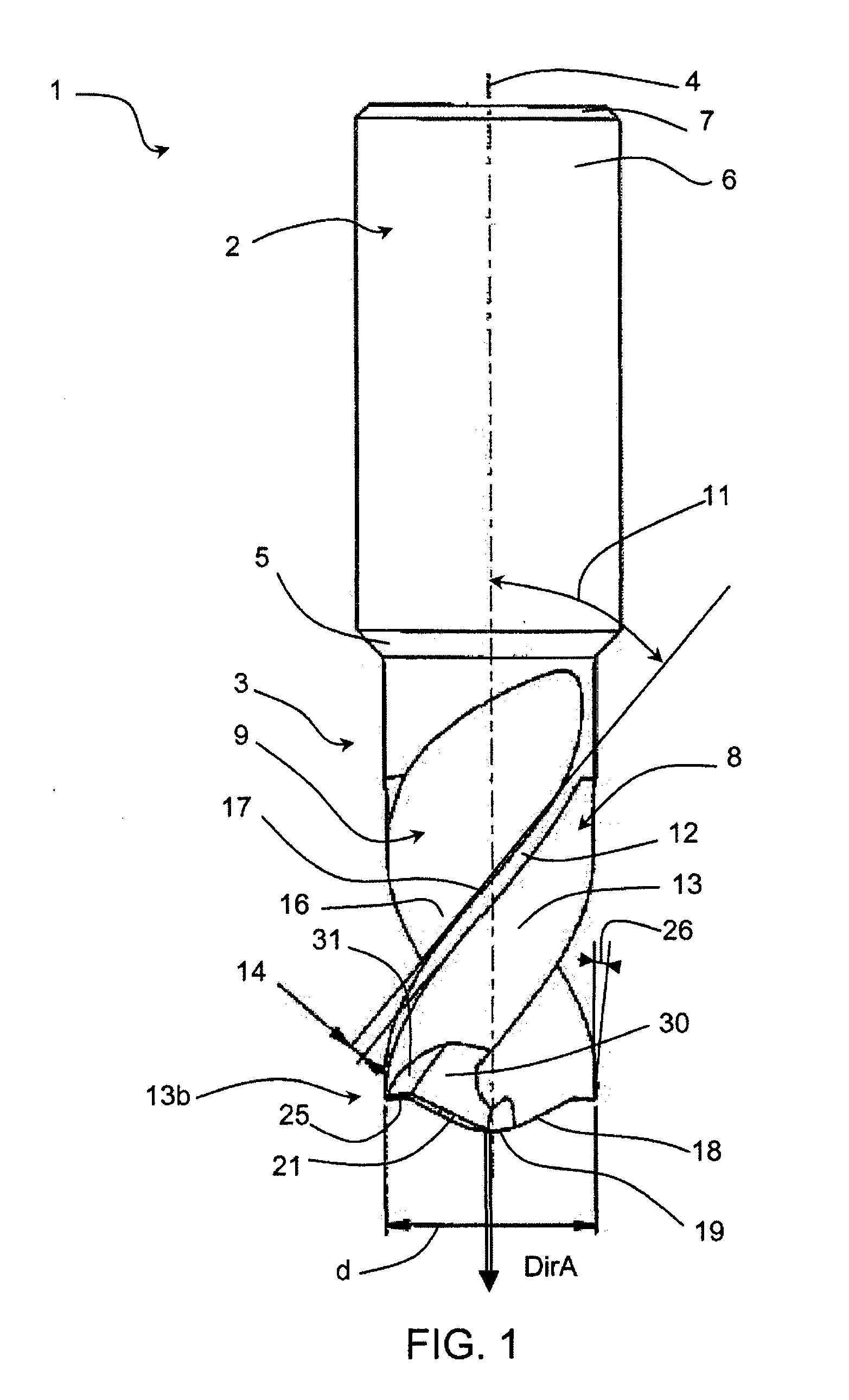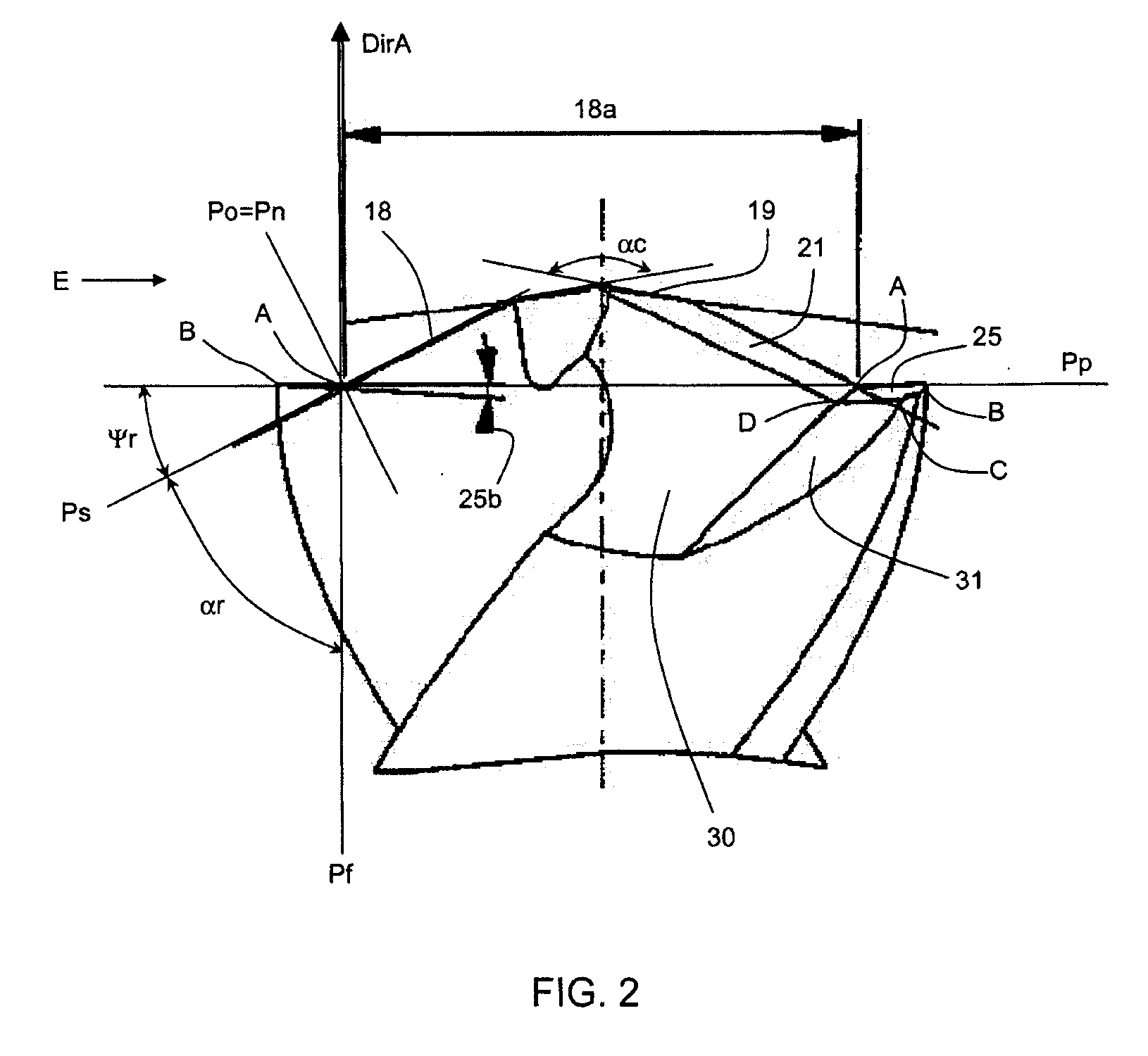Ceramic drill bit for high-speed drilling of composites
a ceramic drill bit and composite technology, applied in the direction of twist drills, manufacturing tools, wood boring tools, etc., can solve the problems of accelerated degradation of ceramic drill bits, increased drilling depth, and distortion of parts, so as to prevent delamination
- Summary
- Abstract
- Description
- Claims
- Application Information
AI Technical Summary
Benefits of technology
Problems solved by technology
Method used
Image
Examples
Embodiment Construction
[0024]FIGS. 1 to 5 represent by way of example a one-piece drill bit made of a ceramic for the high-speed drilling of composites, in particular carbon-fiber composites having an epoxy resin matrix.
[0025]This ceramic drill bit 1 comprises (see FIG. 1) a cylindrical or conical shank 2 and a body 3 extending from the shank along the axis 4 of the drill bit down to a free axial end 13b. The shank may be smooth, as illustrated here, or may have an annular slot (not shown) used for clamping the drill bit in the chuck of a machine tool (not shown). The free axial end 6 of the shank terminates in a bevel 7, making it easier to insert it into the chuck of the machine tool. The shank 2 and the body 3 of the drill bit 1 may be joined together via a bevel 5, this being necessary when the outside diameter of the shank differs from that of the body.
[0026]The body 3 of the drill bit 1 includes two lips 8 and two flutes 9 extending alternately around the axis 4 from the shank 2 down to the free axi...
PUM
| Property | Measurement | Unit |
|---|---|---|
| helix angle | aaaaa | aaaaa |
| helix angle | aaaaa | aaaaa |
| conicity angle | aaaaa | aaaaa |
Abstract
Description
Claims
Application Information
 Login to View More
Login to View More - R&D
- Intellectual Property
- Life Sciences
- Materials
- Tech Scout
- Unparalleled Data Quality
- Higher Quality Content
- 60% Fewer Hallucinations
Browse by: Latest US Patents, China's latest patents, Technical Efficacy Thesaurus, Application Domain, Technology Topic, Popular Technical Reports.
© 2025 PatSnap. All rights reserved.Legal|Privacy policy|Modern Slavery Act Transparency Statement|Sitemap|About US| Contact US: help@patsnap.com



